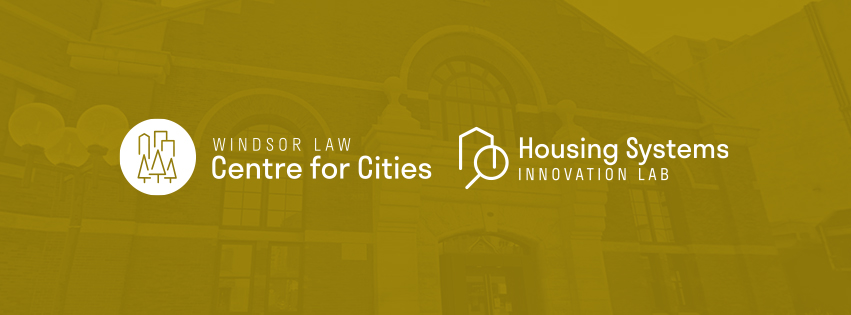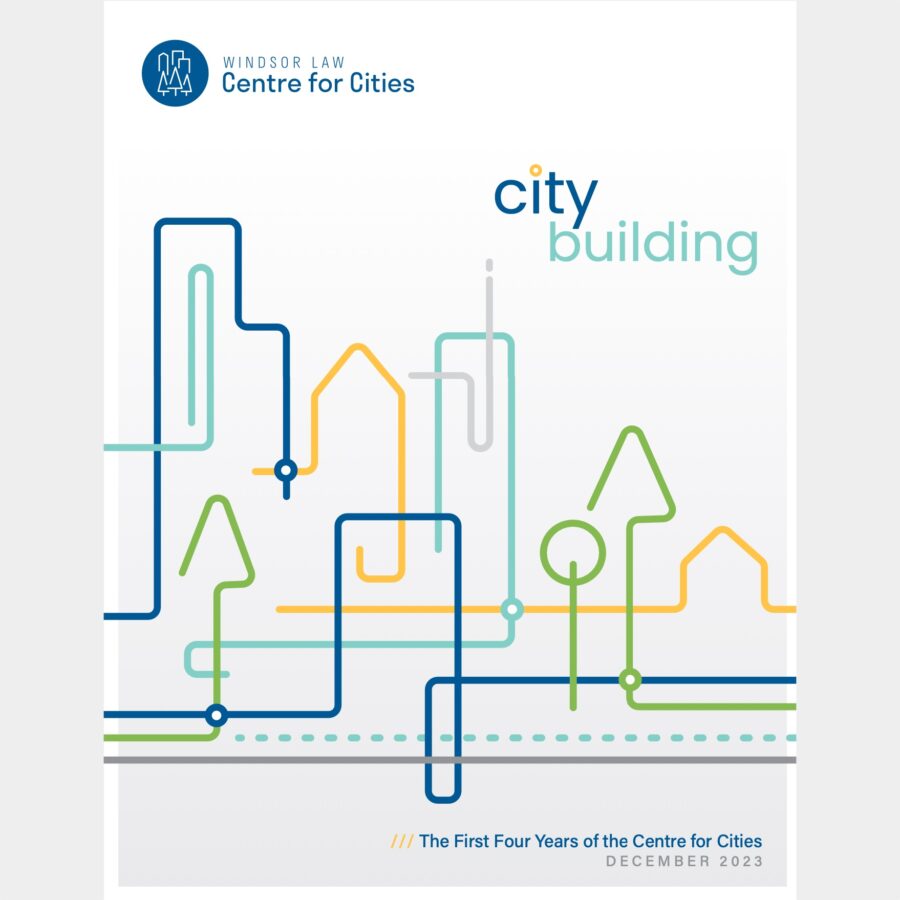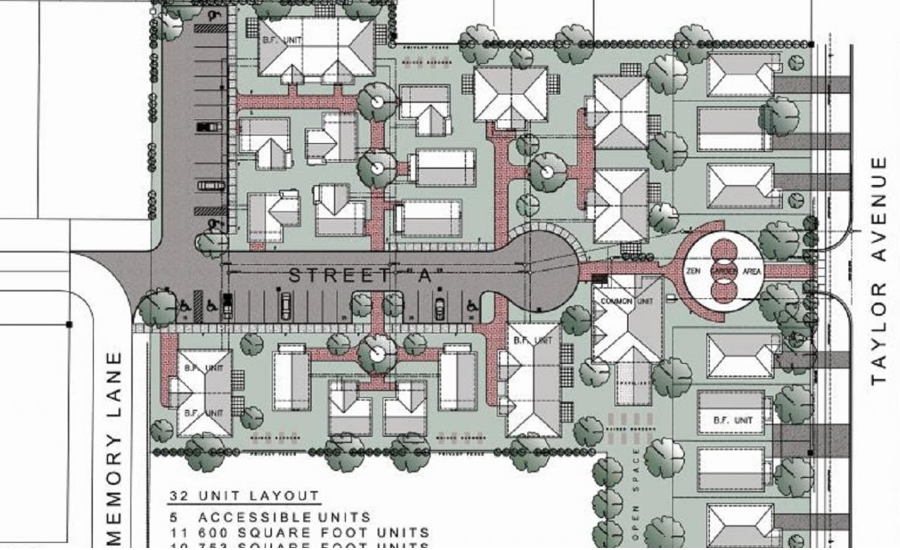
Blog Series: Exploring the Potential of Community Land Trusts, Part 2
How Do Community Land Trusts Work?
(9 September 2021) by Princess Doe
This is the second of a three-part blog series on Community Land Trusts (CLTs). As discussed in the first post, CLTs are community-based, non-profit organizations that are designed to ensure community stewardship, rather than mere ownership, of land. Their history is connected to efforts by Black communities to address racial disparities in home ownership and to protect neighbourhoods that they have been forcibly displaced from. CLTs can be used to develop agricultural projects, conserve land and create urban green spaces, as well as provide commercial spaces to serve local communities. CLTs have most commonly been used to create permanent affordable housing opportunities for lower-income families in rapidly gentrifying areas. Focusing on the housing context, this post will provide a look at how CLTs work, how they differ from other forms of social housing, and the municipal tools necessary to support their creation.
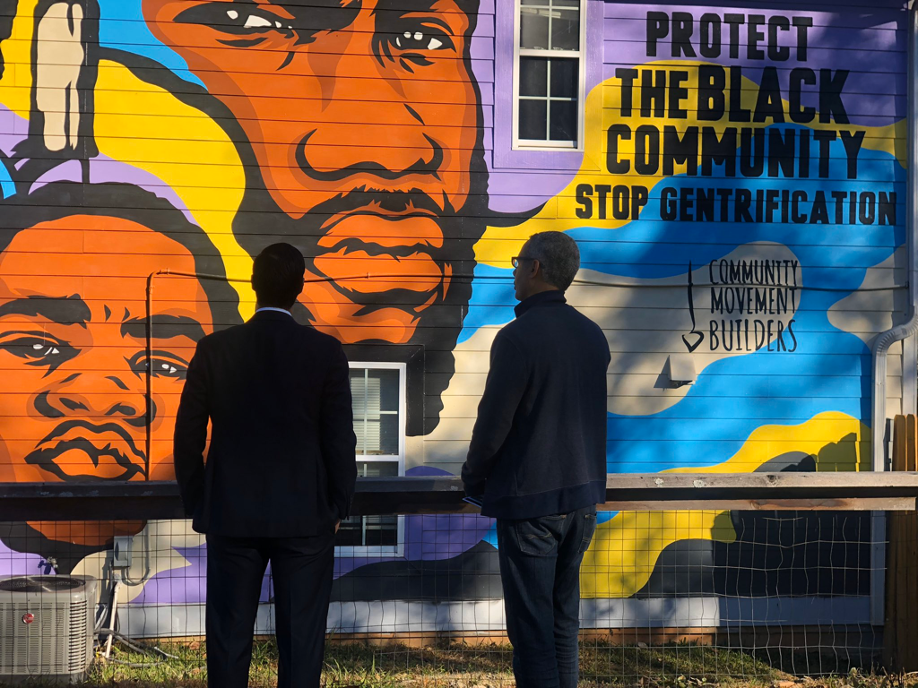
A community land trust has to be formed as a non-profit organization which then acquires the land and maintains permanent ownership. CLTs then oversee the development of affordable housing and/or other projects that others can purchase or lease on that property. In Canada, most CLTs may seek charitable status from the Canada Revenue Agency (CRA). CLTs are considered a form of community economic development, as they may provide a variety of activities including community capacity building, social enterprise, and social finance.
There are two main types of CLTs in Canada: community-based and sector-led. Community-based CLTs are the most common model. In a typical CLT, there is a dual-ownership arrangement. Households become a member of a CLT, and then buy a long-term lease (such as a 99-year ground lease) on a house or property on a CLT-owned land. The rights and responsibilities of the CLT and homeowner/lessee are set out in this ground lease, with the occupant-owner holding most of the bundle of rights, such as security of tenure, privacy of use and the right to make changes to their living space. Failure to comply with terms and conditions may result in fines, penalties or possibly eviction. When a homeowner sells, they earn a portion of the increased property value. The rest remains with the trust, so that affordability for future low-income families can be preserved.
Community-based CLTs are grassroots-led initiatives, often stemming from social activism against issues such as gentrification, food insecurity, and racial disparities. CLTs discussed in the previous post, such as Parkdale Neighbourhood Land Trust and Milton Parc, are examples of community-based CLTs in Canada. They are governed by a board of directors that consists of residents of the CLT land and neighbourhood.
Sector-led CLTs, by contrast, are not governed by individual community members, but rather organizations that hold the trust for a social purpose. In Canada, this has been most common within the co-operative housing sector. For example, in Vancouver, the Community Land Trust is controlled by the Co-Operative Housing Federation of British Columbia, and owns 2,600 homes. The City of Vancouver entered into 99-year leases with the Community Land Trust, allowing the land trust to design, build, and operate new affordable housing.
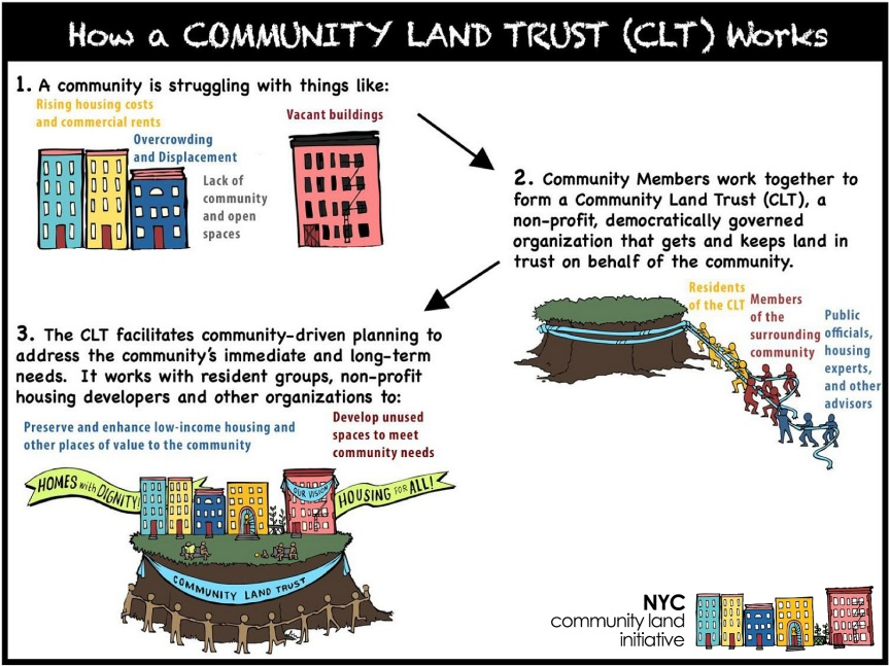
There is often confusion between CLTs and other forms of social housing. Social housing are government-owned corporations that have their power through legislation, in Ontario mainly the Housing Services Act, 2011. Social housing provides below-market rental units to households with low-to-moderate incomes. Under the Housing Services Act, municipal service managers are responsible for the administration and funding of social housing, and maintenance of service level standards. Social housing can include non-profit and co-operative housing communities; rent supplement programs found in the private market; and rural housing owned by the Ontario Aboriginal Housing Services. The largest form of social housing is public housing. Public housing, such as Windsor-Essex Community Housing and London-Middlesex Community Housing, is housing owned directly by a level of government, who rents units to eligible low-income households which is typically geared to their income.
A key difference between CLTs and social housing is the democratic stewardship and control that defines CLTs. All planning decisions are community-led to fit their specific needs. This particularly allows for members of marginalized communities to have their voices centred in developing their built environment in a way that would not be guaranteed with social housing. As Jennifer Le discusses in her paper The ‘Community’ in Community Land Trusts: The Role of Community Control in Pursuing Community Land Trust Activism, “the emphasis on local control and residential engagement in CLT decision-making have been argued as critical success factors in building and preserving permanent affordable housing by capitalizing on local community membership, empowerment, and democratic stewardship of assets”. (page 22)
Access to affordable housing is a social determinant of health. It can help secure and maintain employment, improve mental health, provide a healthier living environment, and allow for households to spend more money on healthy food and more. The retrenchment of government-led affordable housing initiatives in the 1980’s has created critical shortages in social housing today. Consequently, waiting lists for subsidized housing have continued to grow over the years and wait times have increased. For example the wait for Toronto Community is roughly 8 years. A person’s life can change dramatically within that time, such as children growing up or perhaps even becoming homeless. These wait times, which the U.N Committee on Economic, Social, and Cultural Rights has identified as an extreme concern, make public housing a less than desirable solution for addressing affordability issues.
There are a variety of tools that municipalities can use to support the development of CLTs. Particularly in the case of affordable housing, municipalities are encouraged to used tools such as property exemptions, establishing inclusionary zoning policies, and providing loans and grants for affordable housing purposes in increasing housing supply. For example, In August 2020 the Chatham-Kent municipal council partnered with the development of the new Brickworks Opportunity Villages Community Land Trust (see main image above). The CLT consists of 18 single-detached dwellings, six semi-detached dwellings or duplex units, and six row-houses or triplex units, totalling 30 units. The municipal council agreed to contribute $200,000 toward construction costs, and $180,000 in-kind contributions. In-kind contributions included waiving planning-application fees, building-permit fees, and development charges. The municipality also offered a grant which is the equivalent to property taxes for 10 years. The development only required a minor zoning variance. There is great potential for municipalities to work with local communities to centre marginalized voices in land development, to meet housing and community needs through CLTs.
The third and final blog post of this series will look at the potential of CLTs in Windsor, Ontario, focusing in particular on the use of a CLT for two historic adjacent downtown properties.
Princess Doe (she/her) is a third-year JD student at Windsor Law and a Student Research Associate for the Windsor Law Centre for Cities.
Main image credit: Opportunity Villages Community Land Trust draft plan. (Photo courtesy the Municipality of Chatham-Kent)
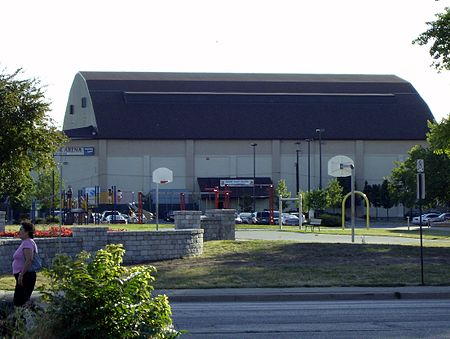
Blog Series: Exploring the Potential of Community Land Trusts, Part 3
How Would They Look in Windsor? (21 September 2021) by Princess Doe This is the final post of a three-part…
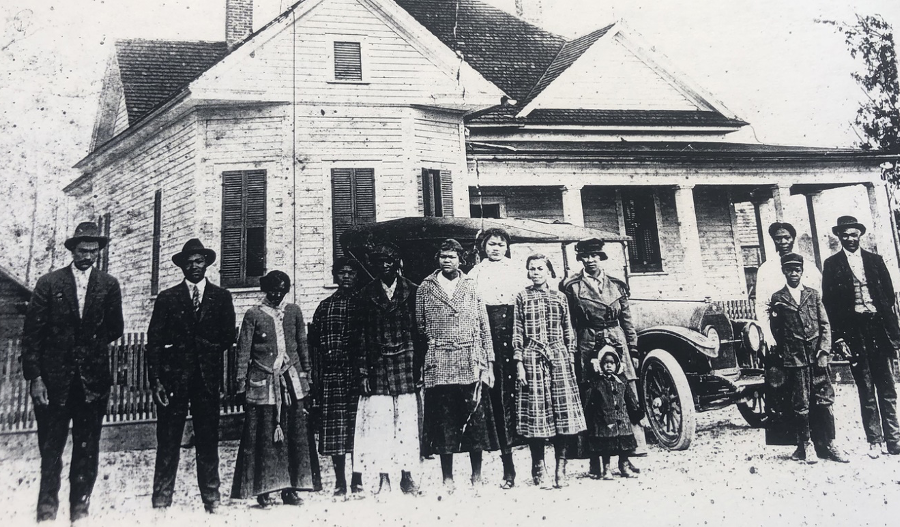
Blog Series: Exploring the Potential of Community Land Trusts, Part 1
An Introduction to Community Land Trusts and their Use in Canada (20 August 2021) by Princess Doe This is the…
